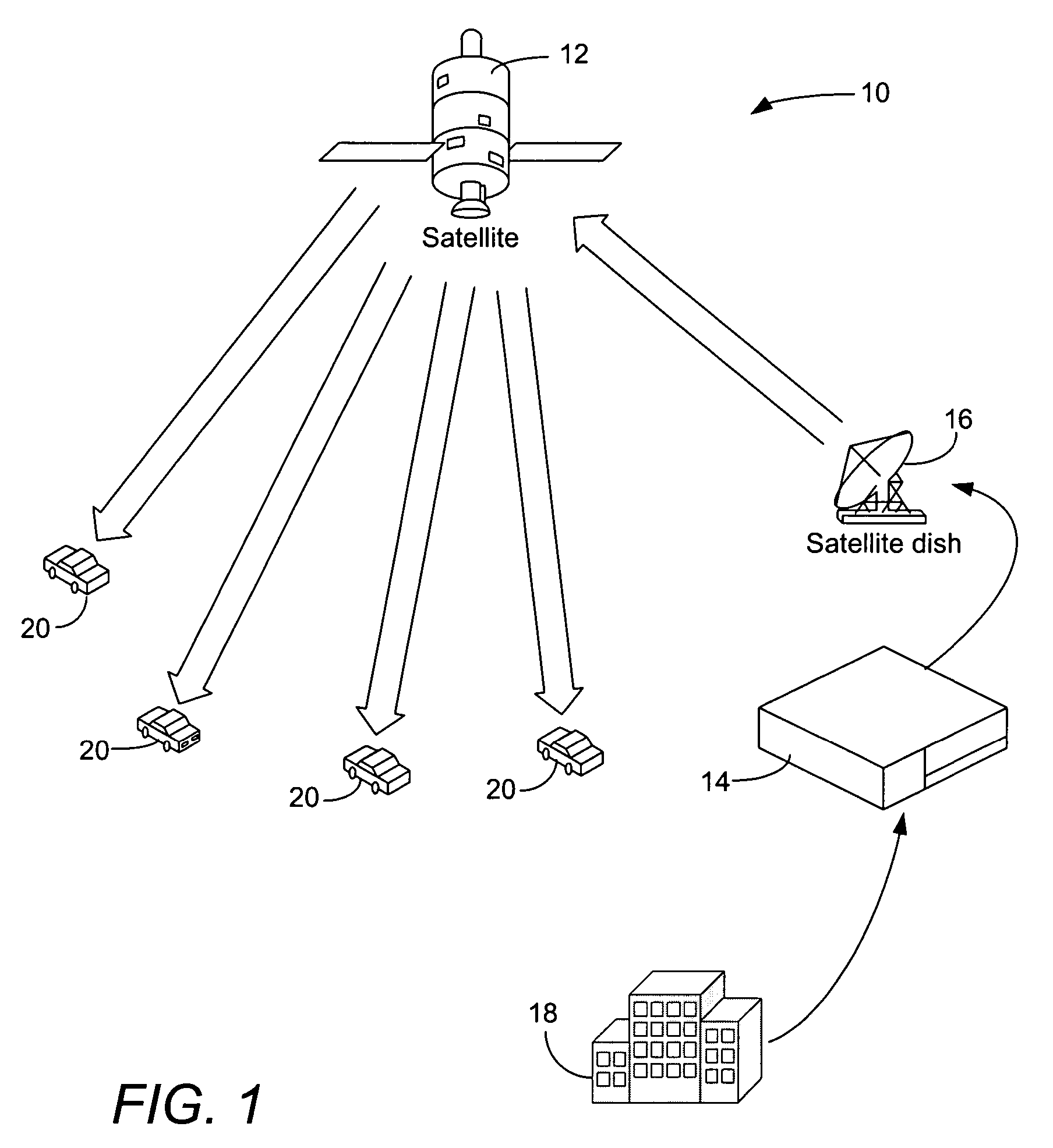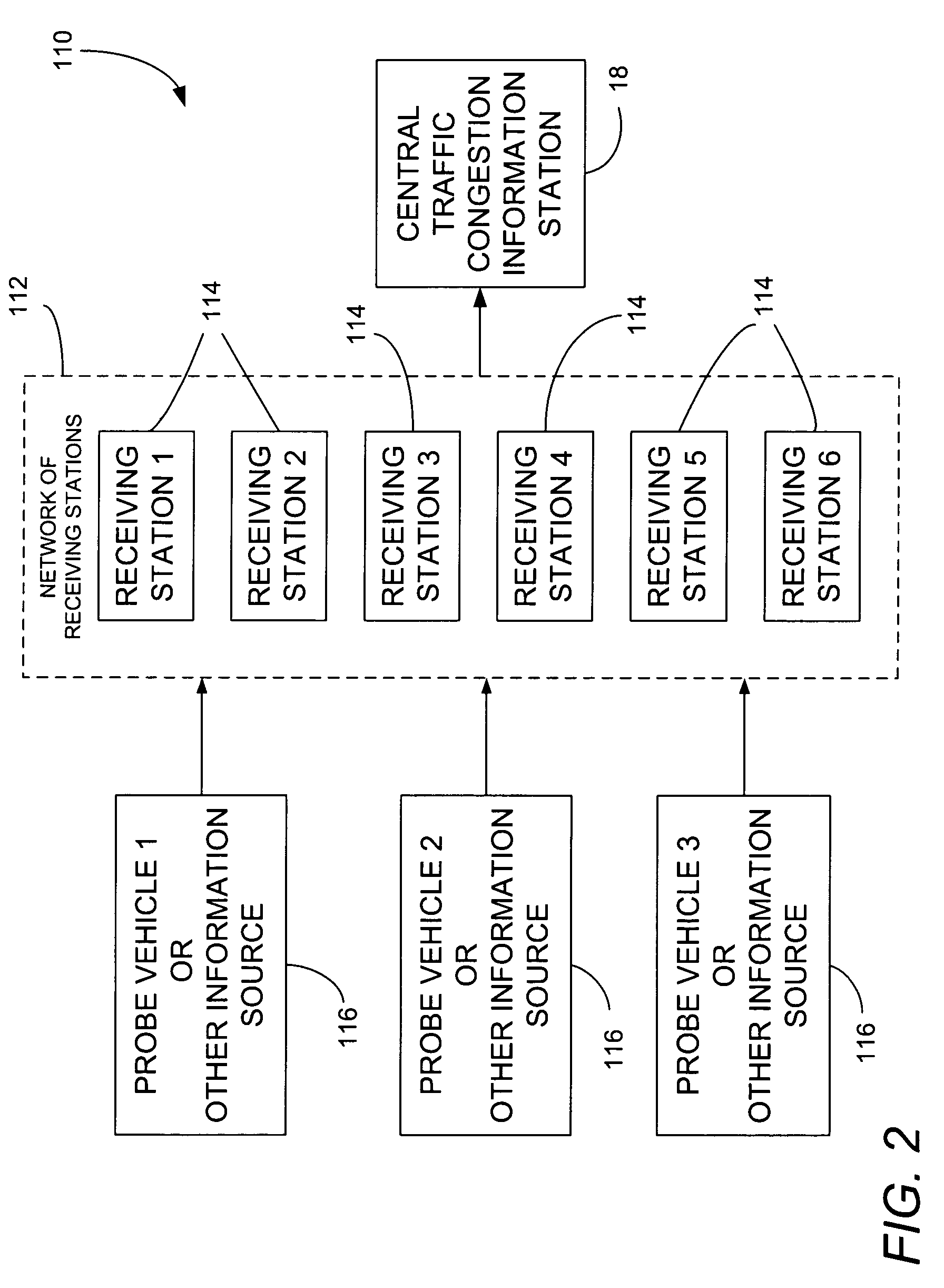Method and system of utilizing satellites to transmit traffic congestion information to vehicles
a technology of traffic congestion and satellites, applied in the field of methods and systems for collecting and distributing traffic congestion information, can solve the problems of collecting data, avoiding traffic congestion areas, and expensive installation of stationary sensors at roadside or on the road surface, so as to save the limited bandwidth available, avoid traffic congestion areas, and the effect of reducing the number of times
- Summary
- Abstract
- Description
- Claims
- Application Information
AI Technical Summary
Benefits of technology
Problems solved by technology
Method used
Image
Examples
Embodiment Construction
[0028]In the following description of the preferred embodiment, reference is made to the accompanying drawings, which form a part hereof, and in which is shown byway of illustration a specific embodiment in which the invention may be practiced. It is to be understood that other embodiments may be utilized and structural changes may be made without departing from the scope of the present invention.
[0029]FIG. 1 illustrates one embodiment of a traffic congestion information distribution system 10 in accordance with the present invention. The traffic distribution system 10 includes at least one digital radio satellite 12, a network operation center and uplink station 14 with a satellite dish 16, a central traffic information station 18, and a group of traffic information user vehicles or mobile users 20 which travel segments of a road network which may be a metropolitan highway system, a regional highway system, national expressway system or a cross-continent expressway system. The sate...
PUM
 Login to View More
Login to View More Abstract
Description
Claims
Application Information
 Login to View More
Login to View More - R&D
- Intellectual Property
- Life Sciences
- Materials
- Tech Scout
- Unparalleled Data Quality
- Higher Quality Content
- 60% Fewer Hallucinations
Browse by: Latest US Patents, China's latest patents, Technical Efficacy Thesaurus, Application Domain, Technology Topic, Popular Technical Reports.
© 2025 PatSnap. All rights reserved.Legal|Privacy policy|Modern Slavery Act Transparency Statement|Sitemap|About US| Contact US: help@patsnap.com



